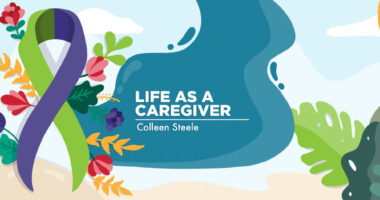Self-help Intervention Found to Ease Anxiety, Depression in Pilot Study

A four-week self-help intervention program — based on principles of cognitive-behavioral therapy (CBT), a type of talk therapy — significantly reduced anxiety and depression among people with pulmonary hypertension (PH), according to data from a small U.K. pilot study.
“We developed a self-help intervention for anxiety in PH, which was found to be acceptable, feasible and safe,” the research team wrote.
“Results add to the growing evidence supporting psychological therapies in people with PH. Self-help intervention offer an effective and accessible form of therapy that can be used as a stand-alone intervention or to supplement other treatments,” they added.
The study, “Self-help cognitive behavioural therapy for anxiety in pulmonary hypertension: pilot randomised controlled trial,” was published in European Respiratory Journal – Open Research.
Mental health conditions, including anxiety and depression are prevalent among people with PH, and are associated with negative effects on cardiovascular function — which could exacerbate PH symptoms and reduce quality of life.
CBT, sometimes called psychotherapy, is commonly used to treat anxiety, and a growing body of evidence suggests that the addition of CBT self-management tools can be an effective form of treatment.
In collaboration with the Pulmonary Hypertension Association U.K. (PHA UK), the research team developed a CBT-based self-help intervention to treat anxiety in adults with PH. Additional input came from an interdisciplinary group of people, including adults with PH, caregivers, and clinicians.
The intervention consisted of four individual booklets, to be completed over four weeks, that included educational materials about anxiety and PH, and exercises to develop coping skills to manage them. The booklets were administered via paper or electronic format.
To test the intervention’s efficacy, the team conducted a pilot study involving 37 people with PH across the U.K., the U.S., Canada, India, the Netherlands, and Australia. This was dubbed the self-help group. An additional 40 participants who did not receive the therapy served as a control group.
Changes in anxiety and depression were measured from the study’s start (baseline) to the end of the intervention, and again at a follow-up one month after the end of the intervention.
Following the intervention program, those in the self-help group experienced significant declines in anxiety, depression, and the presence of unhelpful thoughts and behaviors, as compared with the control group.
At baseline, participants in both groups were considered to have, on average, clinically significant, “moderate” levels of anxiety and depression. By the study’s end, these measures were significantly higher among control participants than in those who received the self-help intervention, whose symptoms were now considered “mild.”
These improvements were maintained at follow-up, the researchers found.
The percentage of those in the self-help group experiencing anxiety was reduced from 64.9% to 25% after the program. Similarly, 67.7% experienced significant depression at the study’s start, which was reduced to 32.1%.
Overall, 71.4% of those in the self-help group reported reliable benefits in anxiety and 39.3% claimed reliable reductions in depression.
Participants also completed a semi-structured questionnaire via telephone or email to assess their opinions about the program two weeks into the intervention and again at the end.
The pilot had an overall dropout rate of 15.6%. A larger proportion of those receiving the intervention — 18.9% — dropped out of the study, compared with 12.5% of controls. Participants who did not complete the study were younger and reported lower anxiety.
At the two-week check-in, 23 of 32 participants reported they understood the content and felt that it could be helpful without being difficult or distressing.
After the intervention, 10 people rated the program as excellent, 14 people rated it as good, and one person considered the intervention fair.
Most respondents (80%) reported that they felt supported by the intervention, were more in control of their anxiety, and appreciated that the program was tailored specifically to PH.
All participants who completed the program and the final questionnaire said they would recommend the intervention to another person with PH.
The results overall suggest the therapy was beneficial and well-received by the PH community.
“As such, the results further justify a large-scale and definitive [randomized controlled trial] of the current intervention,” the team wrote.
These mental health improvements also could have a positive impact on PH patients’ overall health, the investigators suggested.
“Further research is required to examine the relationship between the cognitive and behavioural strategies that individuals use to cope, and health-related outcomes in PH. Identifying factors associated with positive health outcomes can help to recognise important therapeutic targets, and guide the development of services,” they added.







